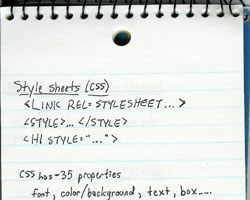The Well Defended
Published 22 years, 2 months pastSo it turns out OCLC might not be acting quite as poorly as first appeared, but instead acting in a ‘rational’ way given the parameters of an irrational system. In their press release (currently available only on their News and Events page, so no permanent URL here) on the subject of suing the Library Hotel, they state:
…trademark law imposes affirmative obligations on trademark owners to protect their trademarks, or risk losing all rights in those marks through legal abandonment. We felt that abandoning our rights in the Dewey trademarks was an unacceptable result for the OCLC membership. OCLC attempted to avoid litigation by repeatedly requesting attribution of our ownership of the Dewey marks from The Library Hotel. They have refused to do so. Unfortunately, that refusal left us with no other recourse than to file a legal complaint.
It is true that trademark law imposes such obligations. It’s long been the case that failure to defend a trademark is taken to mean relinquishment of any rights to preserve said trademark. That’s the irrational part, in my opinion, but I suppose if we somehow fixed that then a lot of copyright lawyers would be out of work, and we can’t have that, now can we?
It may also be the case that a commonly used term can retain legal protection without having to sue everyone just to defend it. If I’m remembering correctly, LucasFilm helped establish that precedent at some point, when a judge ruled that a protected entity that had sufficiently permeated the mainstream (read: every major Star Wars character) didn’t have to be continually defended in order to preserve its protected status. Or something along those lines. I don’t know if the Dewey Decimal system qualifies as having permeated the mainstream, but it probably should. Then again, I occupied offices in university libraries for most of a decade, so my view might be skewed.
Of course, we don’t know what kind of attribution OCLC requested, and how the Library Hotel refused OCLC’s requests; either one or both of them could have been wholly unreasonable in their communications. Regardless, it makes no sense to me that OCLC should be compelled (in a legal sense) to file a lawsuit for an enormous amount of money in this situation. Does the Creative Commons offer a way out of this kind of situation? Could it, with some enhancements? It might be worth investigating.
It was also brought to my attention that the phrase “poisoning the community well” may have connotations of which I was previously unaware. According to Informal Logical Fallacies, I was very close to using the term for a type of logically fallacious argument that is “an attempt to preclude discussion by attacking the credibility of an opponent.” I merely meant “acting in a way contrary to the community interest.” No attacks on anyone’s credibility were intended. I just hope the term isn’t trademarked, because I’d really hate to end up in court over it.
